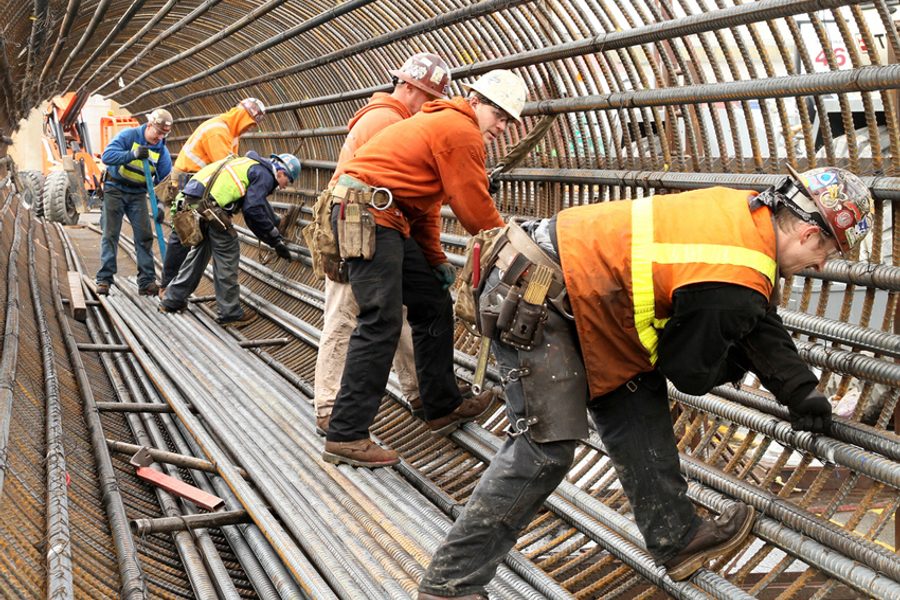Workers Are Losing Manufacturing Jobs Because of Policy, Not NYT’s Mysterious “Tectonic Forces”
Dean Baker

Wall Street executive Steve Rattner had a column in the New York Times in which he derided Donald Trump’s economics by minimizing the impact of trade on the labor market. While much of Trump’s economics undoubtedly deserve derision, Rattner is wrong in minimizing the impact that trade has had on the plight of workers.
Rattner tells readers:
In Mr. Trump’s mind (although not in the minds of serious economists), [the trade deficit is] why we’ve lost 5 million manufacturing jobs since 2000.
The Chinese are certainly protectionists, but a shift in manufacturing jobs was inevitable. For centuries, as countries have developed, the locus of jobs has shifted based on comparative advantage.
Moreover, many of those manufacturing jobs weren’t lost to other countries but to growing efficiency, just as employment in agriculture in the United States has fallen even as output has risen.
No policies could reverse tectonic forces of this magnitude, and in suggesting that there are remedies, Mr. Trump is cynically misleading the American public.
There are several points here that are worth correcting. First, productivity in manufacturing is not new, but the large-scale loss of manufacturing jobs is. According to the Bureau of Labor Statistics, in 1971 we had 17.2 million jobs in manufacturing. In 1997, we 17.4 million jobs. This is in spite of the fact that there was enormous productivity growth in manufacturing over this quarter century. Manufacturing employment then fell to 13.9 million in 2007, the last year before the crash. The big difference between this decade and the prior 26 years was the explosion of the trade deficit as jobs were lost to China and other developing countries.
The fact that we would have more manufacturing jobs without the trade deficit is almost definitional. We currently are running a trade deficit of more than $500 billion a year, a bit less than 3.0 percent of GDP. Total manufacturing output is roughly $1.8 trillion, which means that if we filled the deficit entirely with increased output of manufactured goods, we would expect to see manufacturing employment rise by more than a quarter ($500 billion divided by $1,800 billion), creating more than 3 million new manufacturing jobs.
There is also a fundamental difference between the shift out of manufacturing jobs and the shift out of agricultural jobs to which Rattner refers. Workers left agricultural jobs for higher-paying, higher-productivity jobs in manufacturing. The jobs didn’t actually disappear; the workers did not want them.
This is the exact opposite of what we are seeing with manufacturing jobs. Workers are losing relatively good paying jobs in sectors like autos and steel, and are then forced to take low-pay, low-productivity jobs in the retail or restaurant sectors.
There is absolutely nothing inevitable about this process; it is happening due to a series of policy choices. First, we have structured trade to make it as easy as possible for our companies to invest in manufacturing overseas and ship their products back to the United States, thereby putting our manufacturing workers in direct competition with low-paid workers in the developing world.
Second, we have maintained or even strengthened protections for high-end professionals like doctors or lawyers, so that they are not subject to similar competition. This both protects their pay and prevents the public from enjoying the benefits of lower-cost healthcare, legal services and other professional services which would be one of the fruits of increased international trade in this sector.
Third, we have at least acquiesced in, if not actively supported, policies that have led to a seriously over-valued dollar. The result of these policies is a large and persistent trade deficit, which puts further downward pressure on the wages of those workers who have been most exposed to international competition.
So this is a story whereby trade has been a serious factor depressing the wages of large segments of the US workforce. Contrary to Rattner’s assertion that concerns about trade and jobs “lie far outside the boundaries of accepted economic thought,” many serious economists believe large parts of this story. That may not be the story that Donald Trump is telling, but he is right in arguing that our trade policies have been bad news for much of the population.
A version of this post appeared on CEPR’s blog Beat the Press.







